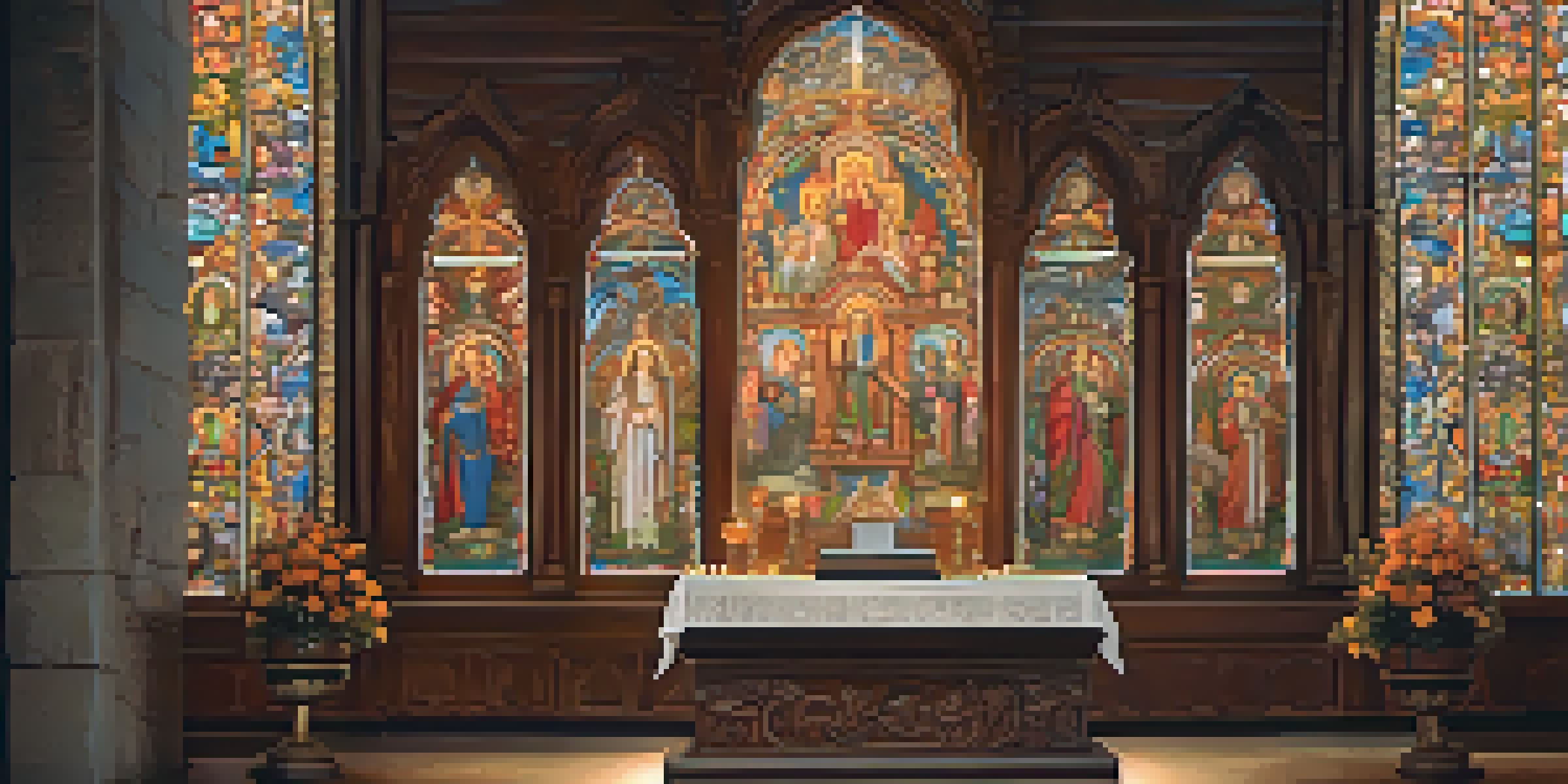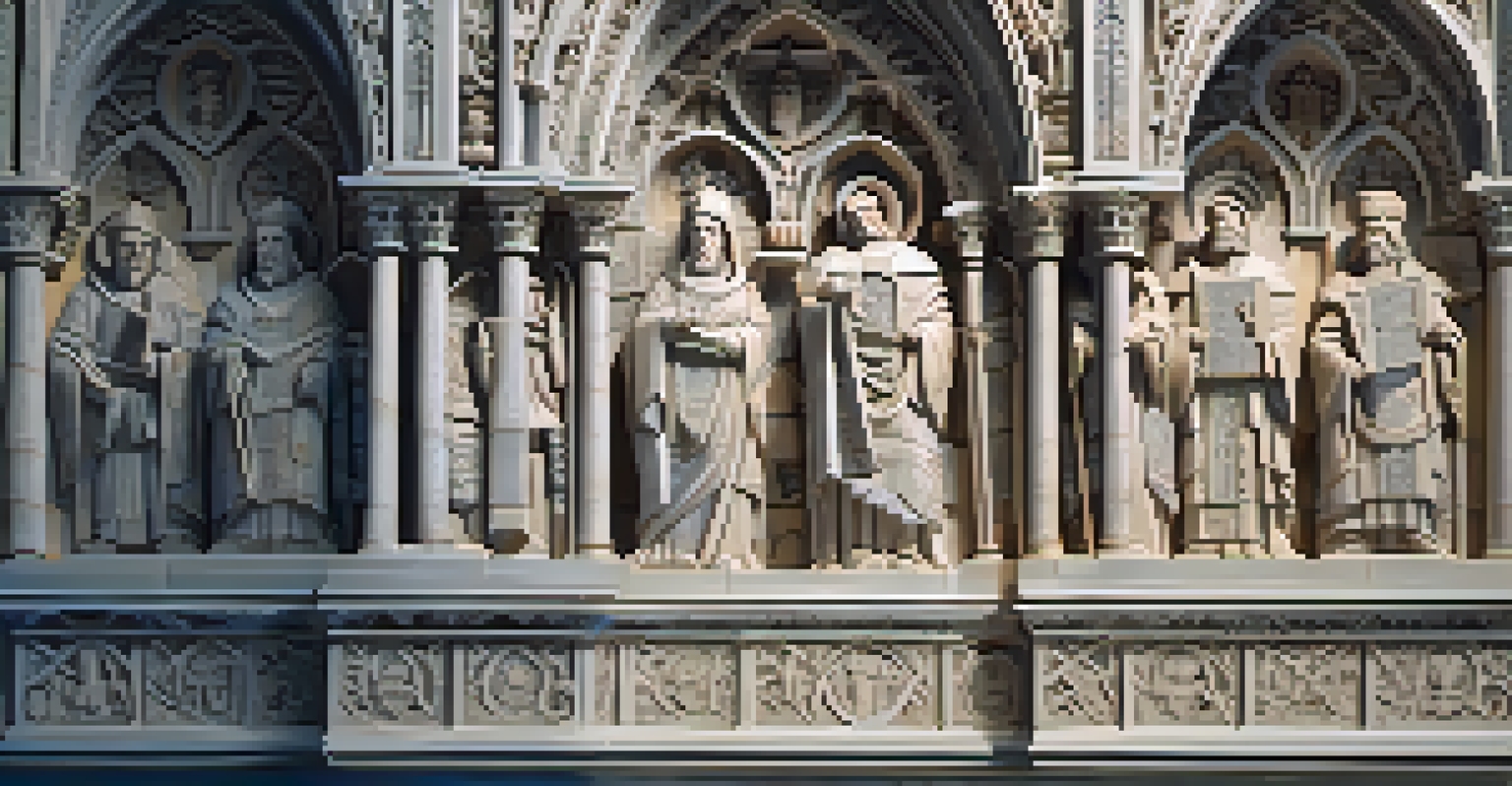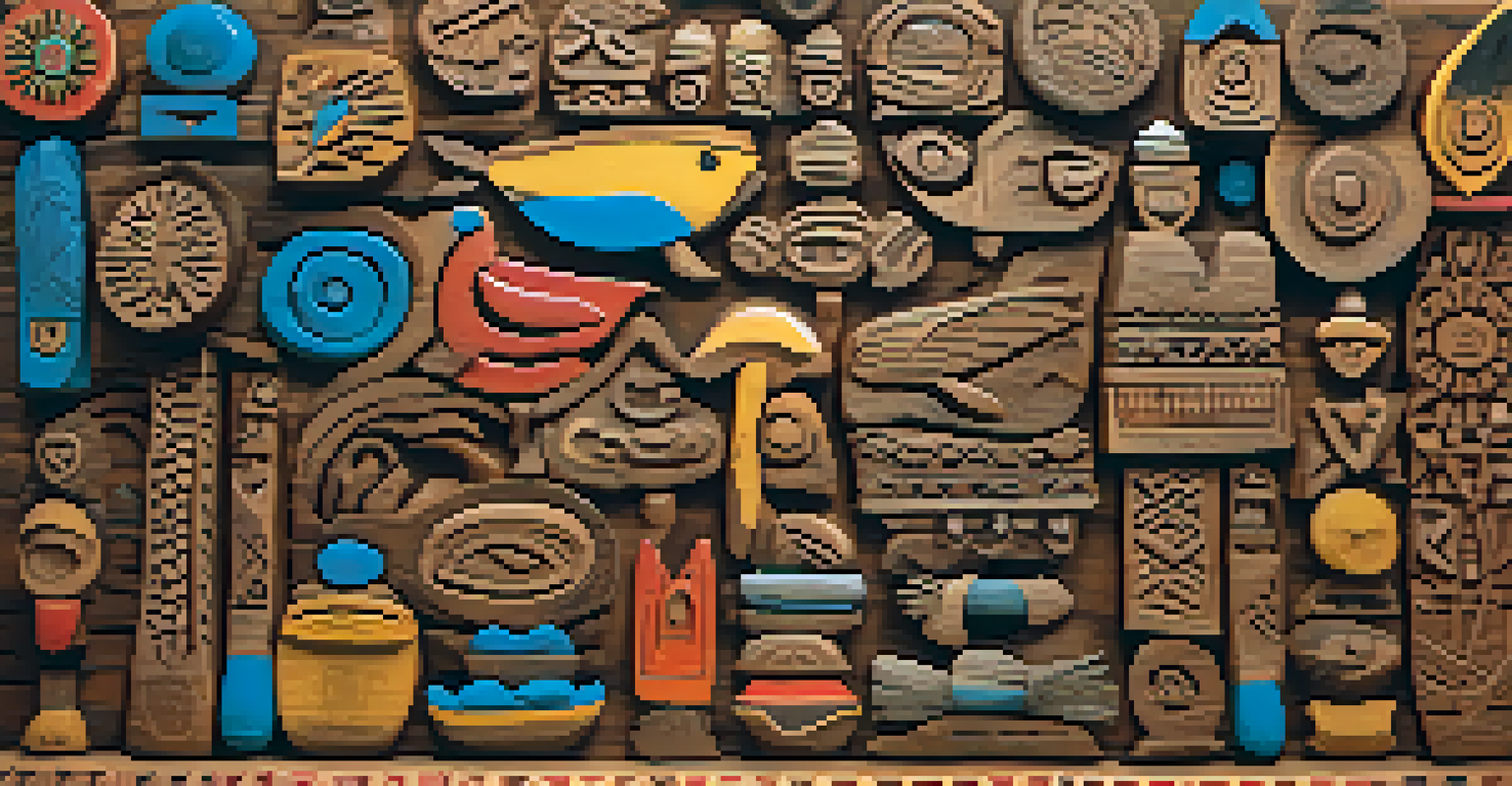Religious Carving: Symbolism and Techniques in History

Understanding Religious Carving: An Overview
Religious carving encompasses the artistic representation of spiritual beliefs through intricate designs and figures. This practice dates back thousands of years, reflecting the diverse cultures and religions around the world. From ancient temples to modern churches, these carvings often serve as visual narratives of faith, offering insights into the beliefs and values of a community.
Art is the most beautiful of all lies.
The materials used in religious carving can vary widely, including wood, stone, and ivory, each offering unique textures and durability. These materials not only determine the carving techniques employed but also influence the overall aesthetic and symbolic significance of the artwork. As such, the choice of material often reflects the resources available to the culture at the time.
In essence, religious carving is more than just art; it is a profound expression of spirituality and identity. It invites viewers to engage with the deeper meanings behind the symbols and stories depicted, creating a bridge between the physical and spiritual realms.
Historical Significance of Religious Carving
Throughout history, religious carving has played a vital role in the communication of faith. For instance, ancient Egyptians used hieroglyphics and carvings to convey religious stories and beliefs on temple walls, making the divine accessible to the masses. Similarly, medieval Europe saw the rise of Gothic cathedrals adorned with detailed stone carvings that depicted biblical narratives.

These carvings often served practical purposes as well, guiding worshippers through religious practices and rituals. They were designed to educate the public about religious doctrines and moral lessons, making complex ideas more understandable through visual representation. This dual role of art as both decoration and instruction underscores its importance in historical contexts.
Religious Carving as Cultural Expression
Religious carving serves as a profound expression of spirituality and identity, reflecting the beliefs and values of diverse cultures.
Moreover, the evolution of styles in religious carving reflects changing societal values and artistic movements. From the intricate designs of Baroque art to the simplicity of modern minimalism, each era's carvings reveal insights about the culture and beliefs of the time.
Symbolism in Religious Carving
Symbolism is a cornerstone of religious carving, as these artworks often convey complex spiritual messages through simple imagery. For instance, the cross in Christian art represents sacrifice and redemption, while the lotus flower in Buddhist carvings symbolizes purity and enlightenment. Each symbol is laden with meaning, inviting deeper reflection and understanding.
Sculpture is the art of the intelligence.
Carving techniques also enhance the symbolism of the artwork. For example, the use of light and shadow in a relief carving can evoke a sense of depth, drawing the viewer into the spiritual narrative. This interplay of technique and symbolism adds layers of meaning, making the artwork not just visually appealing but also spiritually resonant.
Furthermore, different cultures often share similar symbols with unique interpretations. The serpent, for example, appears in various religious contexts, representing both danger and wisdom, depending on the tradition. This cross-cultural exploration of symbolism enriches our understanding of global religious practices.
Techniques Used in Religious Carving
The techniques employed in religious carving are as diverse as the cultures that create them. Traditional methods often include sculpting, relief carving, and intaglio, each offering distinct visual outcomes. Sculpting involves shaping a material into a three-dimensional form, while relief carving creates a raised image on a flat surface, allowing for intricate designs.
Another common technique is chisel carving, where artisans use chisels and hammers to remove material and create detailed images. This method requires not only skill but also an understanding of the material's properties to avoid damaging the artwork. The precision of each cut contributes significantly to the final piece's expressiveness and clarity.
Symbolism Enriches Religious Art
Symbols in religious carving convey complex spiritual messages, inviting deeper reflection and understanding across different cultures.
In modern times, technological advancements have introduced new methods, such as laser engraving and CNC machining, allowing for even greater precision. While these techniques may differ from traditional methods, they still honor the artistic heritage of religious carving, bridging the gap between the past and present.
Regional Variations in Religious Carving
Religious carving varies significantly across different regions, influenced by local customs, beliefs, and available materials. For example, African religious carvings often incorporate vibrant colors and intricate patterns, reflecting the rich spiritual traditions of various tribes. In contrast, Asian carvings, such as those found in Hindu and Buddhist temples, tend to be more intricate and detailed, with an emphasis on storytelling.
In Europe, Gothic cathedrals feature ornate stone carvings that express Christian themes, while Renaissance sculptures showcase the human form in a more naturalistic style. These regional distinctions highlight how local culture and religious beliefs shape the artistic expression of faith through carving.
Moreover, globalization has led to a blending of styles, allowing for a cross-pollination of techniques and motifs. This fusion creates unique interpretations of religious themes, resulting in a rich tapestry of artistic expression across cultures.
Preservation of Religious Carvings
Preserving religious carvings is essential for maintaining cultural heritage and spiritual identity. Many carvings are found in historical sites that face threats from environmental factors, urban development, and neglect. Conservation efforts often involve careful restoration techniques to ensure that these artworks can be appreciated by future generations.
Additionally, documentation plays a crucial role in preservation. Recording the history, techniques, and cultural significance of religious carvings allows for a deeper understanding and appreciation of these artworks. This knowledge can guide conservation efforts and inspire new generations of artists.
Preservation Ensures Cultural Heritage
Preserving religious carvings is vital for maintaining cultural heritage, requiring community involvement and conservation efforts to protect these artworks.
Communities also play a vital role in preserving their religious carvings by fostering a sense of pride and ownership over their cultural heritage. Engaging local artisans in preservation efforts not only protects these artworks but also keeps traditional techniques alive in contemporary practice.
The Future of Religious Carving
As we look to the future, religious carving continues to evolve while remaining rooted in tradition. Contemporary artists are exploring new themes and techniques, often blending traditional practices with modern aesthetics. This fusion creates fresh interpretations of age-old symbols, making them relevant to today's audiences.
Moreover, technology is playing an increasingly significant role in the creation and preservation of religious carvings. Digital tools and 3D printing allow artists to experiment with new forms and materials, pushing the boundaries of what is possible in this ancient art form. However, the challenge lies in balancing innovation with respect for traditional methods.

Ultimately, the future of religious carving is a reflection of our shared human experience—an ongoing dialogue between the past, present, and future. As communities continue to express their spirituality through carving, this art form will undoubtedly remain a vital part of cultural identity and heritage.